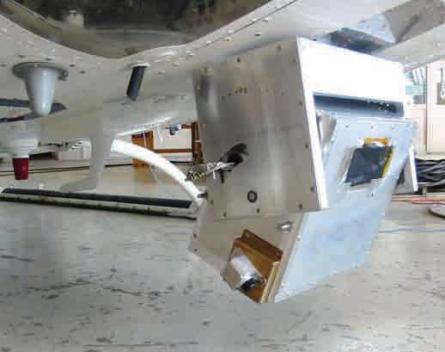CAE plans to expand its flight simulation technologies as well as move into the specialty avionics arena over the next five years through a $714 million investment program dubbed Project Falcon.
The capital infusion includes up to $250 million from the Canadian government in the form of a repayable loan under the country’s Strategic Aerospace and Defence Initiative (SADI), a program that supports “strategic industrial research and pre-competitive development projects in the aerospace, defence, space and security industries,” says CAE.
Falcon will include six technology “thrusts” including the development of an “augmented visionics” system (AVS) that the company says will help pilots taxi, takeoff and land safely “even when visibility outside the cockpit is restricted.”
Pictured below is a prototype system CAE and Neptec flew on a Bell 412 for the Canada National Research Council.

CAE has a teaming agreement with Canada’s Neptec to development AVS, which fuses light detection and ranging (lidar) technology with forward-looking infrared sensors and a CAE-developed terrain and obstacle database to create a real-time 3d awareness of the external environment from the cockpit regardless of weather or lighting.
To further its flight training portfolio, CAE’s traditional niche, the company will develop modelling and simulation technologies for new and existing aircraft types as well as unmanned aerial vehicles.
CAE will also develop networking technologies that allow military forces to train and rehearse missions simultaneously regardless of location.
Falcon follows CAE’s Phoenix project, a $600 million research and development program launched with nearly $180 million in provincial and governmental loans in 2005. Project Phoenix resulted in the development of the company’s 5000 Series full-flight simulators as well as the revamping of existing simulator production lines in Montreal.
Source: FlightGlobal.com























